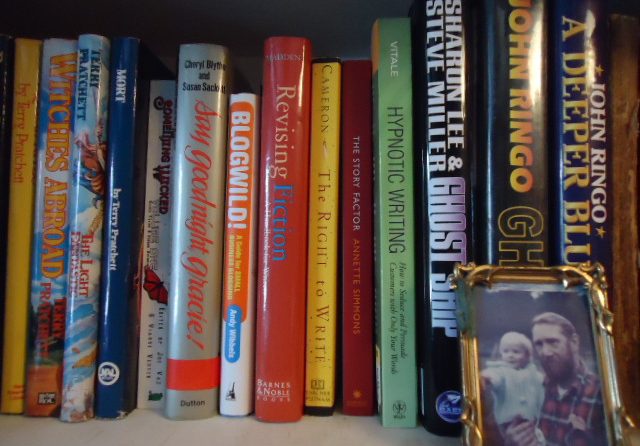
Which came first, the Heinlein or the O’Hanlon? According to Wikipedia, producer George Pal initially commissioned a script for the first “big-budget” space film from writers James O’Hanlon and Rip Van Ronkel, but soon Robert A. Heinlein was in there like Flynn, not only serving as technical advisor, but also co-writing the script. Pal was mostly known for his “Puppetoons,” which were short features with stop-motion animated puppets (similar to the Rudolph the Red-Nosed Reindeer that runs on TV every Christmas), and this was to be his first foray into big-screen SF. (It wouldn’t be his last, however; his version of H.G. Wells’s The Time Machine, starring Rod Taylor; and his adaptation of Frank Robinson’s The Power, with George “Mr. Tan” Hamilton, directed by Byron Haskin, are—if not classics themselves—at least high on almost every long-time SF fan’s movie list.) Pal only directed one of the three (The Time Machine); Destination Moon was directed by Irving Pichel (another great side story: Pichel had been one of the nineteen movie people blacklisted in the US by the House Unamerican Activities Committee, or HUAC.)
At any rate, whatever the original shape of the script, Heinlein’s influence was obvious to most SF fans of the day; whatever scientific accuracy there was in the movie—and there was a fair amount according to what was “known” at the time—was probably due to Heinlein’s influence. The astronomical paintings—both the matte paintings as background on the moon as well as the “viewport” and “viewscreen” pictures of Earth and the moon—were done by Chesley Bonestell, who was already noted for his astronomical work. (When re-watching the movie, however, it appeared to me that some of the moon’s surface during the landing sequence could well have been a model rather than a painting; the shadows moved too well and were too realistic-looking.)
Rather than go the usual route of buying space in Variety and the big daily newspapers to promote his upcoming film, Pal (or his publicity crew) got smart: they somehow got the big magazines of the day to do feature articles on the movie; everything from Life and Look to Popular Mechanics did big articles on the film—the kind of publicity you just can’t buy!

Wikipedia reports that the film was partially based on Heinlein’s Scribners juvenile (YA) book Rocketship Galileo, but in my opinion the novella based on the movie has more in common with the book than does the movie—unless you count the moon, spaceships and y’know, science stuff, like astrophysics and mechanics and so on. The book, published in 1947, actually has Nazis on the moon (remember that World War II was in the very recent past of 1947—and Nazis were kind of in the forefront of rocket science… witness the V-2s that devastated London; and the fact that “our” primary rocket scientist, Herr Doktor Wernher Von Braun, had originally been working for the Nazis—under protest, of course, unless you believe Tom Lehrer, who said “Some say that he’s [Von Braun] hypocritical/Say rather that he’s apolitical….”; I don’t know the ins and outs of all that. I know that Von Braun was arrested by Himmler’s SS at one point and accused of saying that their research was primarily space research rather than weapons research; I also know that E.E. “Doc” Smith’s daughter Verna Smith Trestrail was very proud of an L.E.D. flasher necklace she had—one of the first ever built—that had been made by Dr. Von Braun. And without him we might still be Earthbound.) But anyway, the plot also has a lot in common with his story The Man Who Sold the Moon, about Delos D. Harriman, the industrialist who—denied a moon trip by his doctor—almost single-handedly started moon flights from planet Earth.
The plot, for today’s moviegoers, is very simple: Dr. Charles Cargraves (Warner Anderson) and his friends, General Thayer (Tom Powers) and businessman Jim Barnes (John Archer), an aircraft manufacturer, are trying to build the first moon rocket; they’ve been unable to interest the US government in continuing the funding for the project after the latest rocket failure, despite their harping on what could happen if the *insert name of generic non-US foe* get there first. In desperation, they call a meeting of some of the most powerful and wealthy business magnates and, in a scene reminiscent of Jurassic Park’s DNA cartoon sequence, manage to have Woody Woodpecker explain the how and why of sending a manned rocket to the moon. (Pal was apparently a friend of Walter Lantz, and tried to have Woody—sometimes very surreptitiously—in all his films. This was the very first cartoon where Woody was voiced by Lantz’s wife Grace Lantz!) The cartoon sequence has the desired effect, galvanizing the industrialists to subsidize the project and, at the same time, explaining the science to the general movie audience, few of whom could be expected to understand how rockets really work.

Of course, the whole “bombs on the moon” scenario is one of the things that really drove RAH; you can read in Alexei Panshin’s work (and probably William Patterson’s bio, though I’ve not read that yet) and other places about how Heinlein felt about the Soviets and their ambitions. He was fiercely patriotic and felt that anyone who didn’t feel the same was not someone he wanted to associate with. He was also, as late as 1976, sure that the Soviets were going to start a world war; I, personally heard him—at MidAmeriCon in Kansas City, Missouri (the 1976 Worldcon) assert that there would most assuredly be a nuclear conflict in our lifetimes. These attitudes coloured a lot of his fiction; I would have loved to see him after that to ask how he felt about the fall of the Berlin Wall and the collapse of the USSR. But sadly, I never saw him again, and we never again corresponded after 1978 or so. Although this movie had only the smallest hint of that paranoia, the novella written after the movie (with the same name, Destination Moon) had the protagonists find some kind of secret base on the moon. Nazis? Soviets? Aliens? We’ll never know for sure.
Anyway, the four putative crewmembers—each with a different-coloured space suit, so you could tell them apart on the moon’s monochrome surface (see Figure 4)—were about to do a final rocket test, when a judge issued a restraining order against the launch, citing public fears about radioactivity. (The spaceship—now called “Luna”—had an “atomic rocket” for propulsion—the reaction mass used by the engine was, as far as I can tell, water. This was the biggest departure from known science by the movie—again, as far as I can tell—because to this day, nobody has demonstrated such an engine. The Orion Project, the only nuclear-powered spacecraft I’ve seen proposed, would have used atomic bombs—the actual explosions—as propulsions. Not quite sure why that one hasn’t been tried yet. Probably that darned EPA, sticking its nose in again.) So they have to make the test the actual takeoff, counting on the gate guards—the whole area is fenced in to keep from barbecuing bystanders—to keep out the restraining order long enough for them to take off. Their original radioman, though, suddenly falls under the influence of appendicitis, so they are forced to replace him with Joe Sweeney (Dick Wesson), a Brooklynite who knows the radio equipment forwards and backwards.

They manage to beat the restraining order by seconds; and during the transit from the Earth to the moon, thanks to Joe’s thoroughness in greasing the retractable antenna, have to do a spacewalk to get it out. (Joe, not being a scientist, didn’t realize the grease would freeze solid in cold, airless outer space.) But being a scientist doesn’t help, as one of the brains, trying to see how the rocket tube has been affected by the takeoff, manages to get both magnetic boots free of the ship’s hull and, untethered by a safety line, begins drifting into space. After a bit of hoorah, during which all the crew members go out onto the hull at once—something that should, in my opinion, be forbidden—someone gets the bright idea of using an oxygen cylinder for propulsion and, just as Sandra Bullock in Gravity, using a fire extinguisher to save herself, rescues the errant crewmember. Something I hadn’t realized until my most recent viewing (and as you can tell, I’m looking at the “50th Anniversary Edition”) was that Pal used some stop-motion figures of the crew during the “space walk.”
They manage to land the Luna on the moon, kind of blowing too much reaction mass while they do so. And with that, I must take my leave of this description, lest I give too much away. I’m trying to figure out a way to write a complete review—possibly a link to another blog giving the “spoiler-full” ending—but I haven’t quite got it. So what did I think of this film? I think that modern viewers might find it a bit tame and talky in spots—but if it hadn’t been for the low-budget producer of Rocketship X-M rushing a cheap imitation into theatres three weeks before this movie’s release (thanks to all the publicity generated by the aforementioned magazines) in order to benefit from said publicity—this would have been the very first modern, science-based Trip to the Moon movie! (I don’t count Le voyage dans la Lune, Méliès—1902—because that was really just a fanciful excuse for a film, not really a try at a scientifically plausible trip.)
The science was fairly valid, given the nonexistence of an “atomic” motor—I read somewhere that one was suggested in reality but turned down because it sounded dangerous to have an atomic pile flying around—and the fact that there were no satellites in orbit, no real experience with high-atmosphere craft, and so on; the special effect were—including the impressive matte paintings by Bonestell—well thought out: to simulate the effect of acceleration on faces, I understand some flesh-coloured tape was attached to the actors’ faces and pulled on from underneath (using wires) by film crew members. And though a couple of wires might have been visible during the EVA sequence, let’s remember this was almost 65 years ago! (Some may quibble with the “cracked riverbed” ground at the crater bottom where they landed, but I’m told Chesley Bonestell did that deliberately so he could use forced perspective in the sets. And at that time, nobody knew about how much moon dust there really was.) In view of all this, I would definitely give this a four-star rating out of five… if I did that sort of thing.
SPECIAL ANNOUNCEMENTS!
I’m pleased and privileged to be able to tell you, the SF community at large, of a special award given by the Canadian Science Fiction and Fantasy Association—the givers out of Canada’s Aurora Awards, which are comparable to the Hugos given out at the Worldcon. In previous years, certain Canadian SF/F people have been voted Lifetime Achievement Awards for the Canadian SF community, but those awards are now retired, and all previous Lifetime Achievement Award winners will be inducted into the new Canadian SF/F Hall of Fame! Up to two winners can be selected in any given year; nominated by the Aurora Award voters—members of the Canadian National Convention—to receive this Hall of Fame award for a lifetime of service and achievement. This year, the two winners were both good friends of mine: the team of Spider and Jeanne Robinson—creators of Stardance, Callahan’s Crosstime Saloon, etc.; as well as William Gibson, who has written such classics as Neuromancer, Johnny Mnemonic and the Bridge Trilogy to name just a few. Spider will pick up his and Jeanne’s award at VCON 39 (October 3-5, 2014)—which is also the Canadian National Convention—as will Gibson. For those of you in the Vancouver area, it will be a rare chance to see, and get autographs from, two top names in SF/F! (Go to www.vcon.ca for details.)

Also, there is only about a month for Canadians to vote for the Aurora Awards—given out at the same convention; I think the voting deadline is fast approaching. You have to join CSFFA (www.prixaurorawards.ca) to vote, and you must be a Canadian citizen or resident to do so. Both R. Graeme Cameron and I, along with Dr. Robert Runté, are competing in the same (Fan/other, I think) category. You know who I’d prefer you to vote for, but as long as you vote, that’s the important thing. So don’t forget!
Please do comment on this week’s column/blog entry. If you haven’t already registered—it’s free, and just takes a moment—go ahead and register/comment here; or comment on my Facebook page, or in the several Facebook groups where I publish a link to this column. I might not agree with your comments, but they’re all welcome, and don’t feel you have to agree with me to post a comment; my opinion is, as always, my own, and doesn’t necessarily reflect the views of Amazing Stories or its owners, editors, publishers or other bloggers. See you next week!











Recent Comments